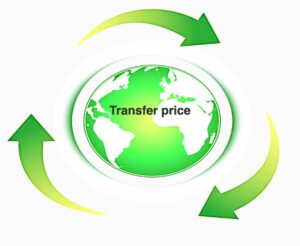First world country: meaning, history and more

What are first world countries?
The term “first world countries” is often used to describe the wealthiest and most advanced nations, while “third world countries” are typically used to refer to less-developed nations. However, the use of these terms has evolved over time, and they are not universally accepted.
In this article, we will explore the history and meaning of this term, as well as some of the criticisms and alternatives that have emerged.
The history and evolution of the terms “First world”
The terms “first world” and “third world” originated during the Cold War, when the world was divided into two main ideological camps
- The capitalist West led by the United States, and
- The communist East led by the Soviet Union.
The “first world” referred to the United States and its Western European allies, who were seen as the most advanced and prosperous nations in the world, with strong economies, democratic institutions, and high standards of living. The “second world” referred to the communist nations of the Soviet Union and its allies, while the “third world” referred to the rest of the world, including many developing nations in Africa, Asia, and Latin America.
Over time, the use of these terms began to shift. In the 1960s and 1970s, many developing nations began to assert their independence and demand a more equitable global order. They argued that the terms “first world” and “third world” were Eurocentric and ignored the diversity and complexity of the global South. Some also criticized the terms for implying a linear progression of development, with “third world” nations seen as lagging behind the more advanced “first world” nations.
As a result, the concept of the “third world” began to evolve. Some scholars and activists began using the term “global South” to describe the nations of Africa, Asia, and Latin America, emphasizing their shared experiences of colonialism, poverty, and marginalization. Others used the term “developing countries” or “less developed countries” to describe the economic and social challenges facing these nations.
Criticisms of the use of these terms and their limitations in describing global inequality
Despite their widespread use, the terms “first world” and “third world” have faced significant criticisms. One of the main criticisms is that they oversimplify complex social, economic, and political realities. For example, the terms ignore the significant differences in wealth, inequality, and development within and between nations. They also fail to capture the diversity of cultural, historical, and political contexts that shape each country’s trajectory of development.
Another criticism is that the terms can reinforce negative stereotypes and perpetuate inequalities. For example, the term “third world” is often associated with poverty, underdevelopment, and backwardness, while the term “first world” is associated with wealth, progress, and modernity. These associations can create a self-fulfilling prophecy, where “third world” nations are seen as inherently inferior or incapable of development, while “first world” nations are seen as models to be emulated.
The terms can obscure the complex power dynamics that shape global inequality. For example, many “third world” nations are rich in natural resources and have significant potential for economic growth, but are held back by a history of colonialism, exploitation, and unequal trade relations with “first world” nations. Similarly, many “first world” nations have achieved their high standards of living through exploitation and domination of other nations, as well as through the exclusion of marginalized groups within their own societies.
Alternatives to the “First world” Framework, such as the human development index and the global south
Given the limitations and criticisms of the “first world/third world” framework, alternative approaches have emerged to better capture the complex realities of global inequality and development. One such approach is the Human Development Index (HDI), developed by the United Nations Development Programme (UNDP) in 1990. The HDI measures a country’s development based on three main factors: life expectancy, education, and income. This approach emphasizes the importance of human well-being and social progress, rather than just economic growth.
Another alternative approach is the concept of the “Global South,” which encompasses not just economic and social indicators, but also historical and political factors. The Global South refers to the nations of Africa, Asia, and Latin America, but it also includes marginalized groups within developed nations. This approach emphasizes the shared experiences of colonialism, exploitation, and marginalization that have shaped the development trajectories of these nations and groups.
Other alternative frameworks have emerged, such as the Sustainable Development Goals (SDGs) and the Post-Development paradigm. The SDGs were developed by the United Nations in 2015 as a blueprint for achieving sustainable and equitable development by 2030. They encompass a wide range of economic, social, and environmental indicators, and emphasize the interconnectedness of global challenges such as poverty, climate change, and inequality. The Post-Development paradigm, on the other hand, challenges the dominant Western model of development, arguing that it is based on a narrow and homogenizing view of progress, and that alternative visions of development are needed that prioritize local knowledge, cultural diversity, and social justice.
Implications of these concepts for international aid, trade, and diplomacy
The concepts of the first world, third world, human development, and the Global South have important implications for international aid, trade, and diplomacy. For example, the traditional approach to aid has been based on the assumption that developed nations have the knowledge and resources to help “develop” poorer nations. However, this approach has been criticized for reinforcing power imbalances and perpetuating a colonial mindset. Alternative approaches, such as community-led development, prioritize local knowledge and empowerment and emphasize the importance of partnerships and collaboration.
Trade relations between developed and developing nations have often been characterized by exploitation and inequality, with developed nations benefiting from cheap labour and access to natural resources in developing nations. Alternative models of trade, such as fair trade and South-South trade, aim to create more equitable and sustainable trading relationships, based on mutual respect and benefit.
Conclusion
The concept of first world countries has evolved significantly over the past few decades, and the term is now seen by many as outdated and oversimplified. While it can still be useful as a rough shorthand for economic and social development, it is important to remember that there is no clear dividing line between first and third world countries, and that many factors influence a country’s level of development. Ultimately, a more nuanced and inclusive approach is needed to understand the complex realities of global inequality and to work towards a more just and equitable world.
What is the difference between first world countries and developed countries?
First world countries is an outdated term that refers to countries aligned with the US during the Cold War, while developed countries are those with high levels of economic, social, and human development.
What are the implications of these concepts for global inequality and development?
These concepts reveal the complex and interconnected nature of global inequality and development and highlight the need for more equitable and sustainable approaches to international aid, trade, and diplomacy.
Don't miss a thing. Follow us on Telegram and Follow us on WhatsApp. If you love videos then also Subscribe to our YouTube Channel. We are on Twitter as MakeMoneyDotNG.





